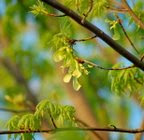End of semester...
New Job....
The flu...
Computer crash...and re-crash...
I'm struggling to meet all of my obligations at the present, and my blog is not at the very top of the list. Actually, I'm postponing one of my most dreaded school projects as I write. I can't say to much about it, except that it is painfully boring. I tend to glaze over when I'm not stimulated.
I did run across a great site today. I read the Larch Serve, I have for many years. I'm a lurker only. However, it seems at work I've been needing good solid info, and the
Brick Industry site was listed on the Larch Serve. There is great
technical notes:
Brick in Landscape,
Misc apps,
Paver Systems, and
Garden Walls.
This is a great resource, especially for us new guys on the job or in school.














